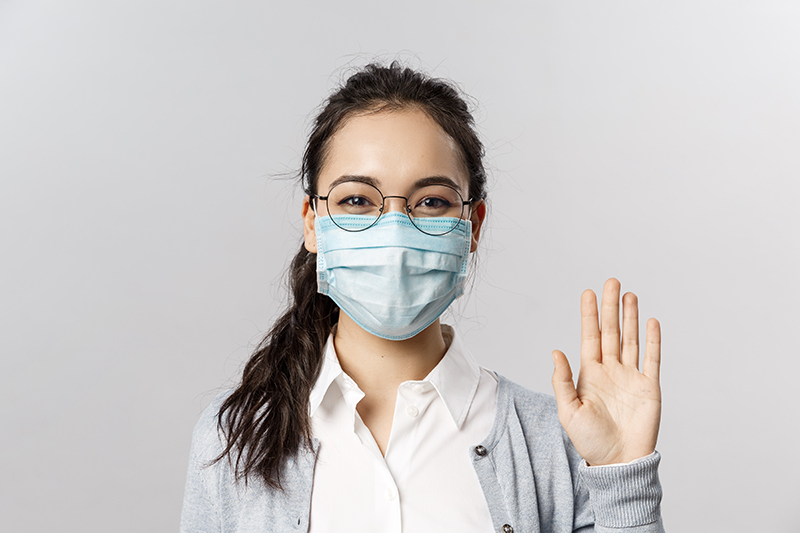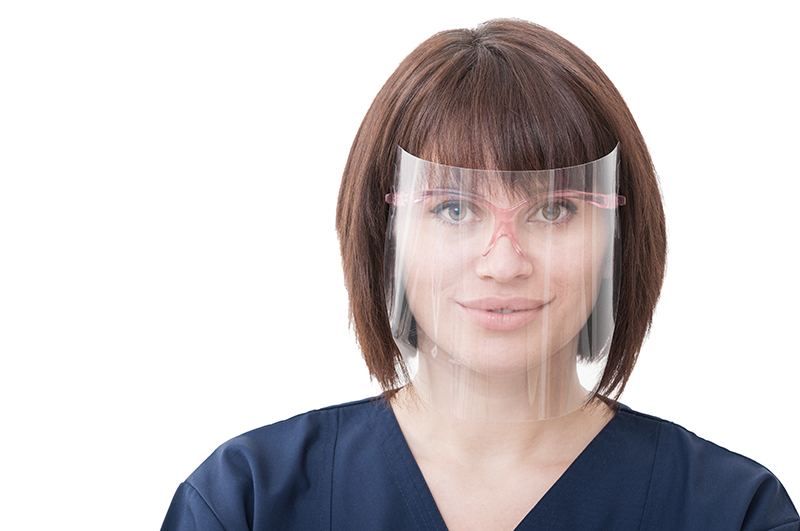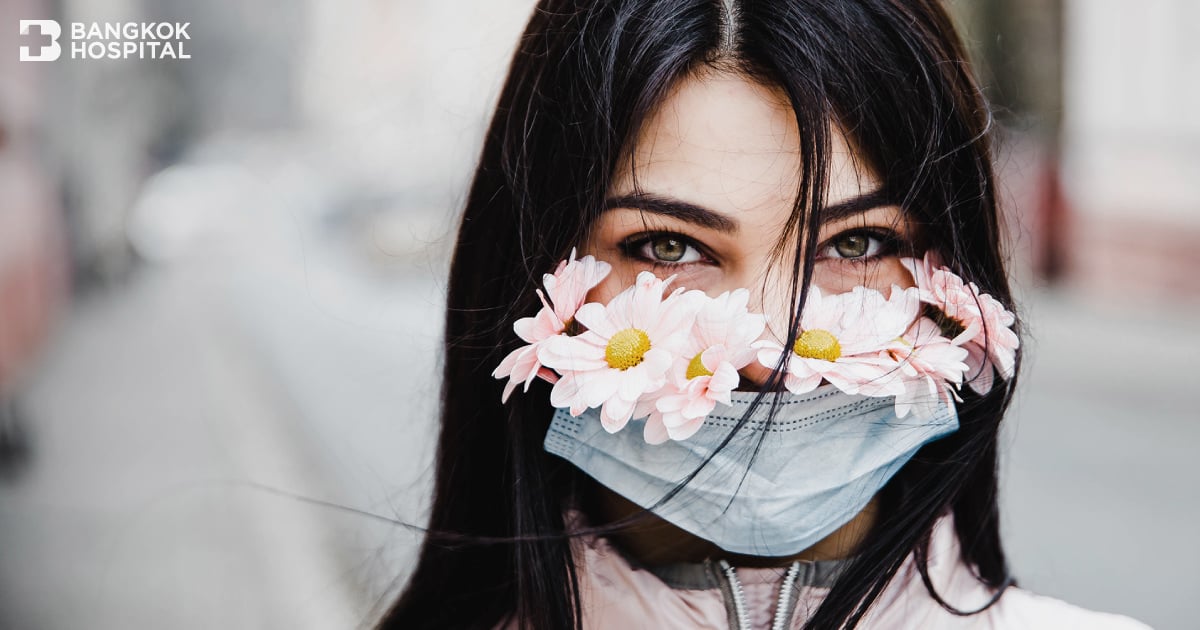COVID-19 disease caused by SARS-CoV-2, a single-stranded RNA virus has recently become global pandemic. It is highly transmissible presenting with a significant fatality rate, especially in the elderly and those with comorbidities such as diabetes, cardiovascular disease, chronic respiratory disease and immune suppression. Although common signs and symptoms typically include respiratory illness, including fever, cough and shortness of breath, conjunctivitis has also been reported 1-2% as one of minor symptoms. The virus is thought to primarily spread via person-to-person through respiratory droplets produced when an infected patient coughs or sneezes. It also could be spread if people touch an object or surface with virus present from an infected person and then touch their mouth, nose or eyes. Clinical researches have suggested that the virus can cause conjunctivitis and possibly be transmitted by aerosol contact with conjunctiva. Since there is no definite treatment for COVID-19 disease, current treatments are given based upon presenting symptoms. Not only respiratory manifestations, COVID-19 disease has produced a wide range of symptoms including ocular conditions. Proper eye care is crucially needed to minimize the risks of viral transmission during this pandemic period.
Previously, some medical research conducted in China reports that ocular secretions and tears of 30 patients with pneumonia hospitalized for COVID-19 were collected. Out of 30, one patient had conjunctivitis. This patient – and not the other 29 – had confirmed result of PCR test indicating SARS-CoV-2 RNA in ocular secretions. This suggests that SARS-CoV-2 can cause conjunctivitis and infectious viral particles might be present in ocular secretions of COVID-19 patients with conjunctivitis. In a larger study published in the New England Journal of Medicine, conjunctival congestion was found in 9 of 1,099 patients (or 0.8%) hospitalized with confirmed COVID-19 from 30 hospitals across China. None of the patients were documented to have seen ophthalmologists and their tears were not sampled for viral detection.
Eye care during COVID-19 pandemic
In order to reduce the risks of disease transmission, taking good care of the eyes is vital. These instructions for eye care should be strictly complied:
- Touching or rubbing eyes must be avoided. Guarding the eyes as well as hands, nose and mouth can slow the spread of coronavirus. Since unwashed hands are source of viral contamination, it is highly recommended to frequently wash hands with soap and water or hand sanitizers. Masks should be regularly worn, if applicable. During coughing or sneezing, mouth and nose must be fully covered. Not only respiratory tract, but virus droplets can also be occasionally transmitted through ocular secretions. Thus touching face, mouth and eyes should be avoided. Considering wearing glasses instead of lens to reduce eye irritation is also suggested.
- Although it is rare condition, conjunctivitis might be a sign of COVID-19 disease. Besides typical respiratory illness, mild to moderate conjunctivitis only accounts for 1-2%. If patients are infected with SARS-CoV-2 and conjunctivitis is concurrently developed (often accompanied with respiratory symptoms), symptomatic treatment will be provided.
- Currently, the use of antimalarial drugs which are chloroquine or hydroxychloroquine in COVID-19 patients has limited clinical evidence to indicate significant correlations with irreversible maculopathy –a disease related to the central part of the retina, called macula which is associated with highly sensitive vision. However, in a review of published guidelines for the use of these 2 drugs as treatment for COVID-19 found that proposed doses worldwide exceeded the maximum daily dose considered safe for long-term therapy for rheumatic and other chronic diseases. Thus, the risk of irreversible maculopathy at these higher doses for short periods of time (usually 1-2 weeks) remains unknown. Patients should be informed of the potential for macular toxicity before starting therapy. A close monitoring for possible ocular abnormalities during receiving treatment is required. Furthermore, toxicity associated with current regimens must be evidently obtained from long-term clinical studies.
- Wearing glasses and other protective devices may add a layer of protection. Although corrective eyeglasses or sunglasses can help shielding the eyes from infected respiratory droplets, they do not entirely protect the eyes from viral exposure. The virus can still reach the eyes from the open sides, tops and bottoms of the glasses. For a full facial protection, safety goggles or face-shield should be worn.

Safe contact lens wear and care
Centers for Disease Control and Prevention (CDC) and American Optometric Association (AOA) confirm that there is no updated evidence to suggest that contact lens wearers are more at risk for acquiring COVID-19 than eyeglass wearers. To protect the eyes during pandemic, contact lens wearers should strictly continue practicing safe contact lens wear and care hygiene habits. Not only to reduce viral transmission, but appropriate hygiene also helps to prevent infectious eye diseases caused by other microorganisms.
Before wearing and after removal of contact lens, it is necessary to wash the hands first with soap and water for at least 20 seconds. Hands must be dry by using clean tissue papers. If signs and symptoms e.g. fever, runny nose, cough and sneeze develop, substituting glasses for contact lenses is recommended. In addition, contact lens wearers usually touch their eyes while wearing lens, resulting in an increased risk of vital transmission. Hand hygiene is extremely important to prevent the spread of the COVID-19 virus.
Contact lens cleaning solution to remove COVID-19 virus
There are two main types of contact lens cleaning solutions: hydrogen peroxide-based solution and multipurpose solution. Both cleaning solutions aim to remove debris and build-up. However they work in different ways.
Hydrogen peroxide-based solution is used for disinfecting, cleaning and rinsing the contact lenses. It should be effective against COVID-19 viruses. However, special care is needed while using this solution since hydrogen peroxide can cause severe irritation and eye damages. To use it safely, the lenses must be placed in the provided case filled with solution to clean and disinfect the lenses. After the disinfection and neutralizing step is completed, which normally takes an hour, the lenses can be removed from the case. Rinsing the lenses with hydrogen peroxide solution and applying them directly to the eyes without completing the entire disinfecting and neutralizing step must be avoided and all given instructions must be strictly followed.
Multipurpose solution is used for daily cleaning, rinsing, disinfecting and storing the lenses. All purposes are obtained from the same solution. Since direct contact to this solution does not cause eye irritation, thus no special care is needed. However, in multipurpose solution and ultrasonic cleaners, there is currently inadequate scientific evidence to determine efficacy against the virus.

Choosing appropriate eye protective equipment
One of transmission modes of the COVID-19 virus is via contaminated droplets that might directly enter the body through the eyes. Corrective eyeglasses only partially shield the eyes from infected respiratory droplets since the virus can still reach the eyes from the open sides of the glasses. To have a full protection, a wide variety of other eye and facial protective equipment is available. Goggles and face shields are usually made of different grades of plastic, mostly polycarbonate with different thickness. To choose proper protective equipment, quality of material, convenience and transparency for good vision should be taken into consideration.
During the COVID-19 pandemic, people might feel frightened to visit hospitals even though they need to receive healthcare services. In Bangkok Hospital, as a tertiary medical-center hub in the region, preventive measures and disease control policy have been strictly implements in all contact points across the campus. In order to ensure the highest level of safety, cleaning and disinfection processes have been conducted in accordance with standard precautions. Personal protective equipment (PPE) is used whenever indicated. To minimize to chance of viral transmission, isolation areas for suspected cases contact points. Our patients and visitors can rest assured that they will be safe while visiting Bangkok Hospital.
Sources (as of 15 April 2020)
https://www.aao.org/headline/alert-important-coronavirus-context
https://www.aoa.org/covid-19-patient-resources/contact-lens-wear-during-covid-19
https://www.cdc.gov/contactlenses/protect-your-eyes.html

